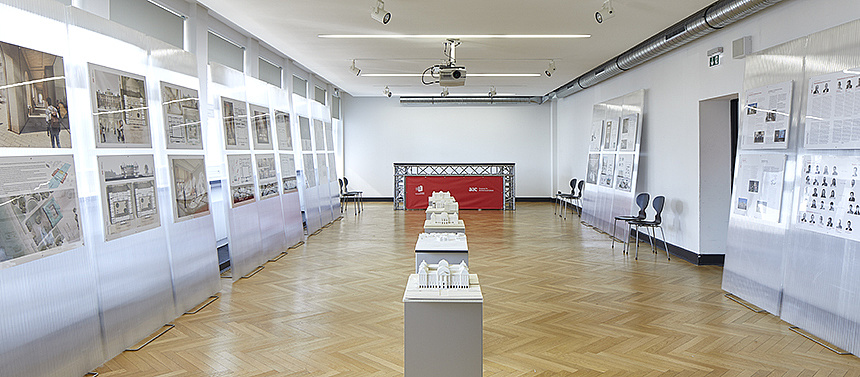
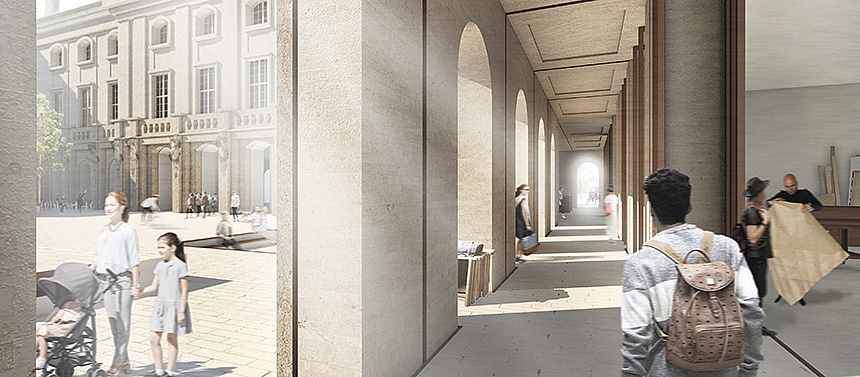
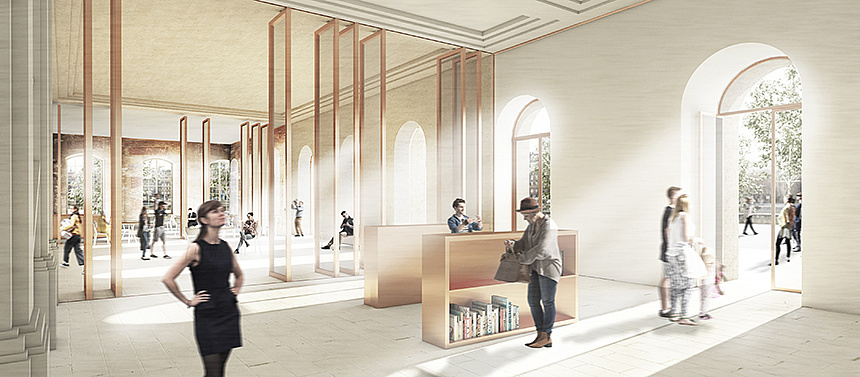
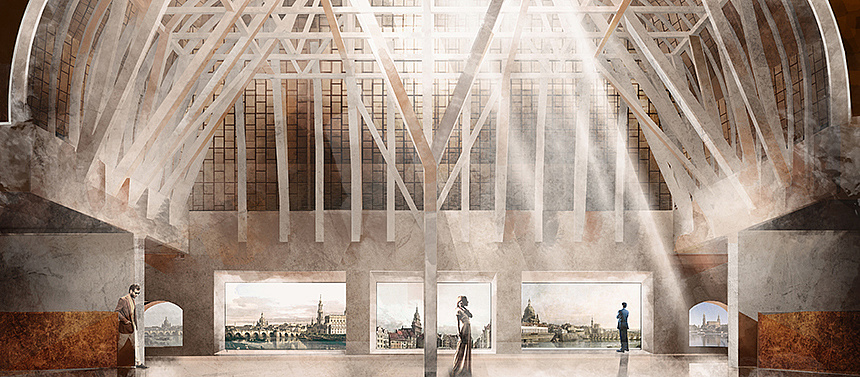
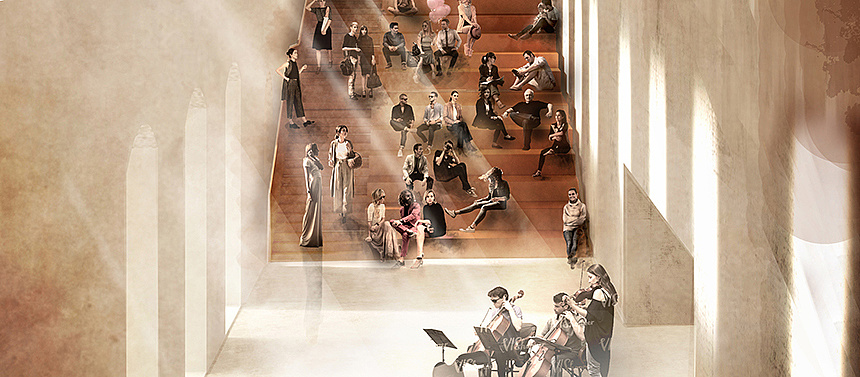
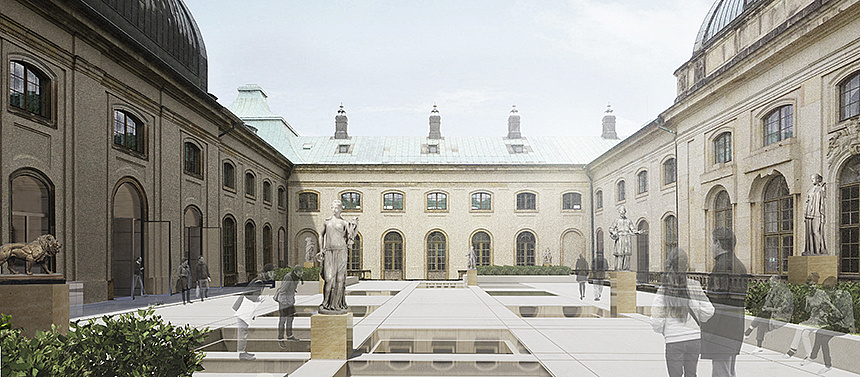
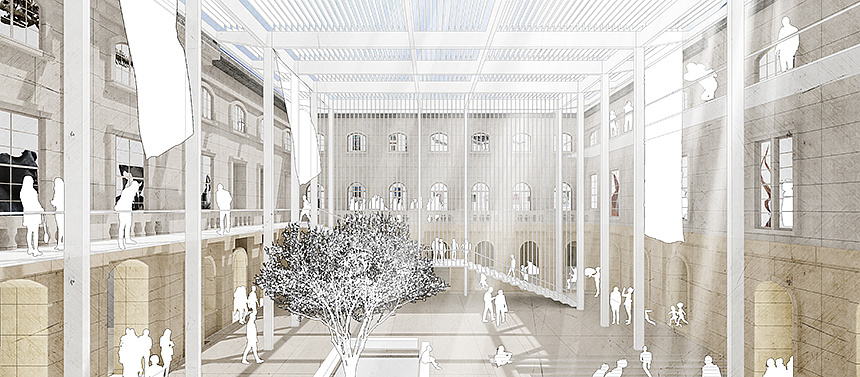
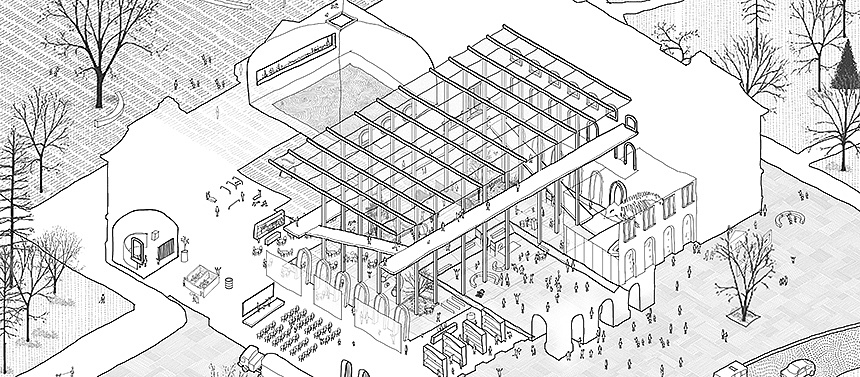
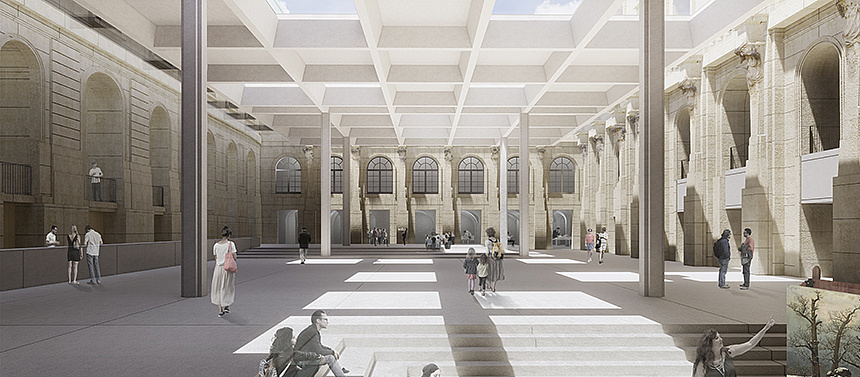
Japanisches Palais - The Art Cabinet as a Working Collection
Exhibition in Hamburg
An exhibition of the results of work carried out in the Academy for Architectural Culture (acc) at Campus Rainvilleterrasse from 5 April bis 26 April 2019
Address: Rainvilleterrasse 4, 22765 Hamburg
Opening hours: Monday to Friday, 10.00 to 16.00 hrs
The spring workshop of the Academy for Architectural Culture was dedicated to the development of designs for a redesign and reorientation of the "Japanisches Palais" in Dresden. The Japanisches Palais is the last large museum in Dresden that has not yet been renovated. Previously a rather introverted palace building, its opening to a future-relevant exhibition building is imminent. With its central location on the northern bank of the Elbe, in direct view of the Zwinger and the Semperoper, it is a significant building block in the important museum landscape of Dresden.
The Staatliche Kunstsammlungen Dresden (SKD) are the oldest and currently second largest museum association in Germany with over 450 years of history. In their museums, the SKD show masterpieces of world renown, especially Raphael's "Sistine Madonna" in the Gemäldegalerie Alte Meister, as well as exhibits from the Historisches Grünes Gewölbe and the Neues Grünes Gewölbe.
Elector Augustus the First founded the Art Cabinet in Dresden in 1560, which is to be seen as the foundation of the SKD's important collection. With the founding of this museum, he combined handicrafts and fine arts as well as scientific and mathematical instruments and objects. This collection was not only conceived as an exhibition, but also as a "working collection". August the First had his own working area on site and created objects there, but also provided the regional craftsmen with tools, books and materials for experimentation and design in order to develop the collection further and keep it alive. This aspect of the "working collection" is of great importance for the new museum concept in the Japanisches Palais, since the intention is to actively involve the public in the museum events beyond the purely aesthetic examination of the exhibited objects, e.g. through accessible show workshops and interactive museum installations.
The involvement and integration of the public will thus also be decisive for the architectural concept of the new museum model, whereby the structural implementation of accessibility and transparency is one of the challenges of the workshop.
In addition, besides the permanent and temporary exhibition areas, the new space allocation programme includes spacious foyer areas with public functions designed to provide visitors with the necessary orientation and a high quality of stay. The task of the aac Workshop was to develop a design solution for a future project with high public interest and cultural value in an important historical building. The programme to be realised was again based on real conditions and requirements and was created in cooperation with the SKD for the actual location.
Designs were conceived and developed in internationally composed groups. In addition to tutorials and interim presentations, the workshop was accompanied by a public lecture programme. A joint excursion to Dresden was also part of the workshop programme.
Photos: Jochen Stüber

